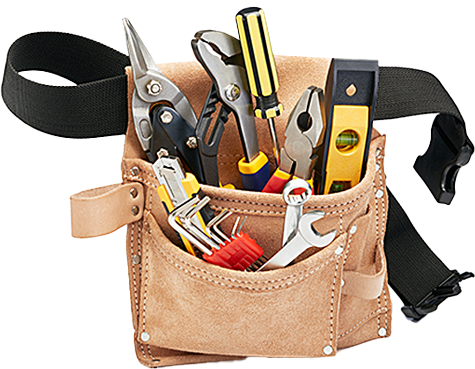he laundry room is an all-too-familiar place that rarely sees many changes, and the containers of detergent that turn your piles of dirty laundry into stacks of clean clothes are just one part of the equation.
When you’re spending countless hours doing nearly 300 loads of laundry per year, there’s more you should be thinking about than which color baskets to buy.
No one wants to come home to a flooded basement or a half-dry load of clothes. Check out these 5 tips and tricks to laundry room maintenance and plumbing to keep your machines running smoothly and efficiently.
1. Wash only full loads and place similar items together
Depending on the type of washing machine you have, you’re using anywhere from 13 to 40 gallons of water each time you wash a load of clothes. That’s a lot of water if you’re only washing one pair of jeans. Find that other pair hidden in the back of your closet to wear instead and wait until you have a full load to wash. All that water you conserve will add up in the long run with savings on your bill.
In this way, it’s tempting to throw that baggy sweatshirt in with your whites, but be conscious of how you divide your loads. By washing and drying similar items together, you’ll avoid the half-dry loads of laundry in the end.
2. Check the temperature
Did you know nearly 90 percent of the energy used to operate a washing machine is spent on water heating? That’s a lot of energy you could save by washing your clothes in cold water. Even turning the dial over to “warm” will cut energy usage by a significant amount.
If you do need that hot water to eliminate the big, dark stain on your favorite shirt, it doesn’t have to be that hot. Your water heater likely has a set temperature, but a temperature set as high as 140 degrees Fahrenheit could pose a potential hazard. Don’t lower it too much, but choose a comfortable, safe range for your home.
3. Inspect hoses and filters
Take a few minutes every so often to inspect your washing machine hoses. If there are any unusual cracks or bulges, it’s time for a replacement. Don’t wait until a burst hose becomes a catastrophe. In general, you should replace your washing machine hose every five years or so.
Hoses are usually reinforced with rubber or stainless steel. Both are fine, but a stainless steel option could be less likely to burst. Just be sure to regularly keep an eye on your washing machine hoses as they may become worn and brittle over time.
4. Check drains
All that lint from your pockets needs to go somewhere. Even if your washing machine is getting the job done, it’s possible it’s not functioning as well as it could be if your drain filter is becoming clogged. In some cases, your washing machine might not be draining at all.
If that’s the case, it’s time to take action. Inspect and clean out your drain filter. Depending on your make and model, it could be located in the front or the back. You should also check for backflow protection.
5. Consider switching to a high efficiency machine
If you really want to conserve energy and keep things running smoothly, a high efficiency washing machine model is the right choice. They’ll get clothes cleaner with less water than older machines. Look over the pros and cons to decide where you want to spend your money with the nearly 300 loads of laundry you’ll be doing each year.
The punctual plumbers at Benjamin Franklin Plumbing are always on call to help you with plumbing repairs or emergency plumbing. Give us a call today for a plumbing maintenance check-up in your laundry room or in your whole house!




